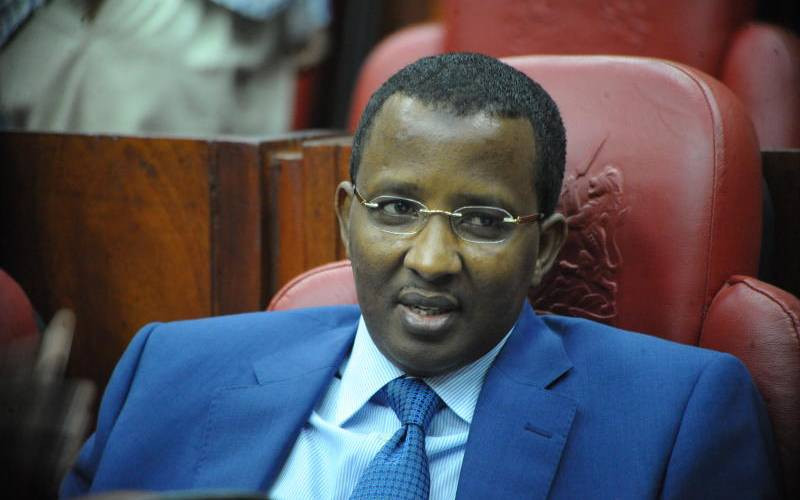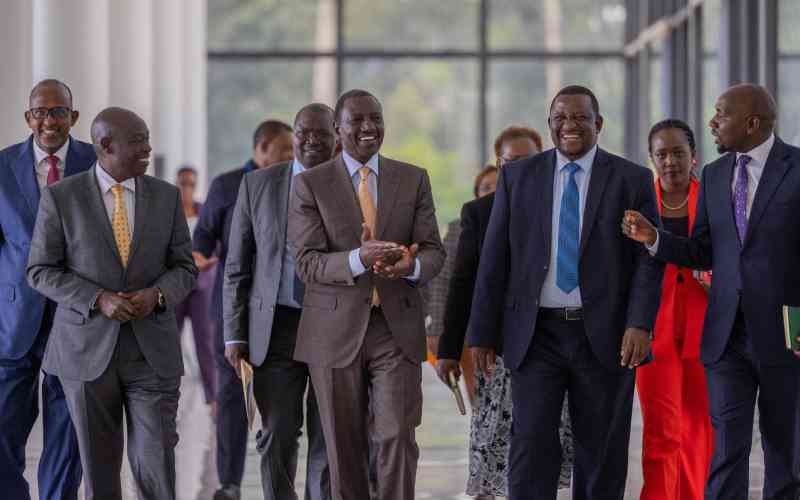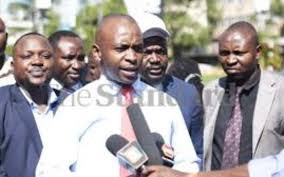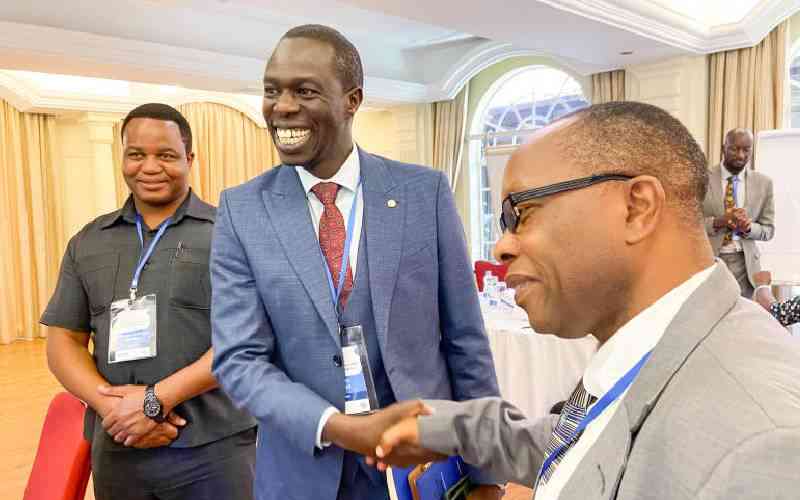
A team appointed to investigate the January 24, 2003, Busia aircraft crash made horrid revelations on the Kenya Civil Aviation Authority (KCAA).
The report, which was never made public, indicates that the senior government officials who had gone for Vice President Moody Awori's homecoming after the 2002 General Election victory, had boarded a death trap.
Transport minister John Michuki picked Justice (rtd) Lee Muthoga to head a team to probe what could have brought down the 24-seater Gulfstream executive jet immediately after take-off.
Labour minister Ahmad Mohammed Khalif died in the accident, but Cabinet ministers Martha Karua and Raphael Tuju, among others, survived. The pilots Sammy Mungai and Abdikadir Kuto also died.
Dr Wanjiru Kihoro was seriously injured and went into a coma until she died three years and nine months later.
According to the Muthoga team, there was no national aviation policy and retirees who had been recalled to duty but had not been retrained were manning some of the critical facilities at KCAA.
Neglected airstrips
The report revealed that the government rarely maintained the 156 airstrips countrywide.
Before the establishment of Kenya Airports Authority (KAA) in 1991, the airstrips were maintained by the aerodromes department.
KAA was handed the task to run 12 airports while the remaining 145 airstrips were to be managed by the then-District Commissioners.
It emerged that the Office of the President had requested for Sh50 million for the year for maintaining the airstrips but only got Sh 12.5 million. The office protested but its cries to National Treasury fell on deaf ears.
Further, they observed that KCAA was grossly understaffed and was unable to attract or retain staff. It was established that the staff have low morale and the information given on air safety was found to be sometimes inaccurate, incomplete and unreliable.
"The management of DCA (Directorate of Civil Aviation) or KCAA is weak and ineffective," the 83-page report said, adding that there was a mass exit of expatriate aviators.
The team, which also comprised Mwangi Kamau, Colonel Enos Amwai, Peter Musyoki, Captain Joe Mulle and Allan Cullinan, showed that it was impossible to successfully take off from Busia airstrip with the load it had.
"Pilot's logbooks were clearly falsified in some cases to reflect a state different from the true state of the competence of the pilot. Aircraft technical logbooks were often not fully completed with noted defects, contrary to the requirement of the law."
Chief pilot's testimony
The chief pilot, who was one of at least 74 witnesses, admitted that the flight should not have taken off.
"She, and everyone else, agreed that the flight to Busia, was in all the circumstances ill advised," Muthoga's team concluded, adding that the length of and condition of the runway combined with the pilot's inexperience in the type of the operation significantly contributed to the accident.
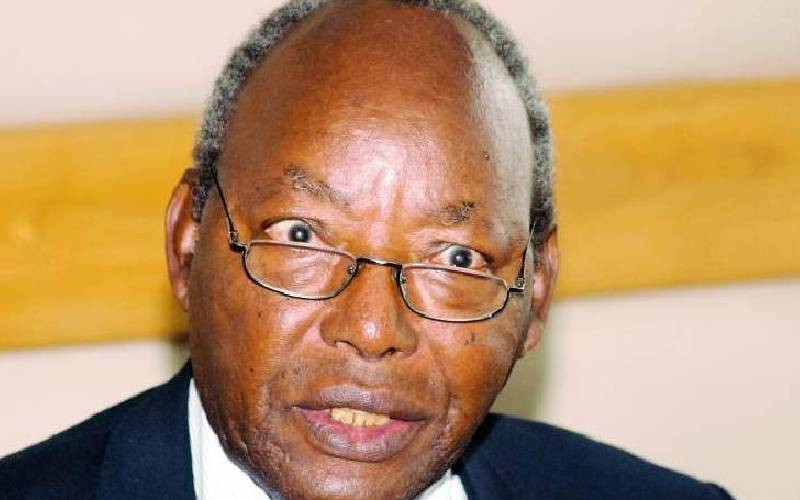
The probe team also heard testimonies from KCAA, Kenya Association of Air Operators, Kenya Airways, Association of Kenya Insurers, the Kenya Wildlife Services, and Amref.
They also visited the accident site, African Commuter Services Ltd and Airworks (K) Ltd, the firm that was maintaining the plane.
From the site, the team recreated the last moments of the takeoff. They indicated that on the initial stage, the ill-fated plane first veered off to the right leaving the runway at approximately 510 metres.
The plane then overran the adjoining bumpy terrain and some bushes before lifting off the ground and banking sharply to the right.
It then hit the top of a tree, snagged some power line cables. The aircraft then hit the ground before finally somersaulting to a halt on its back on a house.
It was established that Busia Airstrip had no aviation aids and had a school and a posho mill adjacent to the runway.
The plane's pilot in command was Kuto. He was then 31 years and had flown 2,507 hours. The report indicate that he had been cleared to fly and medically sound.
His co-pilot was 30-year-old Mungai. His experience on air was 2,752.7 hours. He had enough rest and medically fit. However, the report reads that he was overweight by 14 pounds or six kilos.
Kuto and Mungai died out of severe injuries. Mungai had been thrown out of the plane.
The probe concluded that Kuto had not expected to go to Busia until the chief pilot declined to fly the VIPs.
Records submitted to the probe team indicated that he had only about 15 hours of formal flight training on the aircraft before he started flying it the previous year.
On the aircraft, the team concluded that it was impossible to determine whether it was maintained in accordance with the approved requirements as there was no reported defects in the technical log.
Meanwhile, it was insured by Smith and Howell Aviation Insurance Services, a UK-based insurer, and had clearance by commissioner of insurance to insure aircraft overseas.
It was, however, not the first time that the plane had an accident. According to the report, on February 28, 1997, it hit a hut on takeoff and damaged the left wing.
Four months later, on April 6, 1997 in Goma, DRC, it hit and killed a person on takeoff.
In August 2000, it was reported that the plane had a nose gear collapse in South Sudan, which caused a damage of both propellers and the belly skin.
The Muthoga team indicated on the ill-fated day, there was no evidence of any mechanical failure.
It was also established that the aircraft load was correctly distributed.
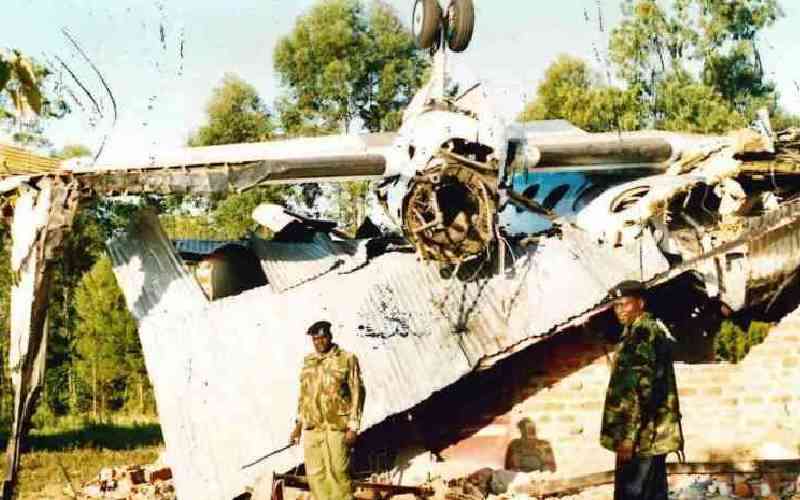
Meanwhile, the African Commuter Services was previously known as East African Commuter Services and according to the report, changing its name on November 12, 1996. It was issued with a provisional air service licence on January 30, 1997.
It then got full clearance on November 27, 1998 and an air operator's certificate (AOC) on February 19, 1999.
The company had a general manager, chief pilot, secretary, five pilots, two operations clerks and three mechanics.
The team also indicated that a police air-wing helicopter was involved in a fatal accident in 1996. It had carried several senior security personnel from the Rift Valley.
"Many witnesses cited accident investigations as lacking in consistence. The reports were said to be unavailable to the public thereby denying the industry the benefits of lessons to be learnt from accidents."
Most witnesses recommended that the accident investigation branch be made an operationally independent body reporting to the minister.
According to the Muthoga team, a public commission investigated the same but by the time the Busia plane crash team was sitting, the report was not released yet.
"It was therefore not clear if recommendations were made regarding guidelines for group travel of senior government officials," the report noted.
The probable cause of the accident, according to the team, was as a premature take-off.
On the other hand, it indicated that other contributing factors were terrible condition of the runway, which was not enough to accommodate the jet's takeoff.
The pilots were said not to have been adequately prepared for the operation.
In the meantime, the team also found out that although the Busia Airstrip was established in 1970, the land had not been transferred to the government by the time the accident happened.
They also found problems with Wilson Airport, which included miraa operations that were a danger, lack of computerised weather and date reports for briefing, slums and buildings around the airport, and lack of aerodrome controller with his own dedicated frequency.
Michuki's costly mistake
On the Jomo Kenyatta International Airport (JKIA), the team reported that it had unserviceable ground aviation aids, had unclean public toilets and often seemed to lack water.
Kisumu Airport had a bird strike hazard. "Apparently not enough has been done to address this," the report also said.
According to Muthoga's team, a better decision would have been to fly empty to Kisumu Airport.
The team recommended that African Commuter be suspended until it complied with the AOC.
However, Michuki had already jumped the gun. His announcement within hours would later become an expensive mistake by the government.
The minister's communication followed KCAA's drastic action against the airline. The authority sent a 50-word fax cancelling the licence. This letter cost taxpayers Sh2.6 billion after the Supreme Court dismissed an appeal by the Attorney General and KCAA.
The court ordered KCAA to pay Sh1.4 billion while failure to pay in time cost Kenyans a further Sh1.2 billion in interest.
 The Standard Group Plc is a multi-media organization with investments in media platforms spanning newspaper print
operations, television, radio broadcasting, digital and online services. The Standard Group is recognized as a
leading multi-media house in Kenya with a key influence in matters of national and international interest.
The Standard Group Plc is a multi-media organization with investments in media platforms spanning newspaper print
operations, television, radio broadcasting, digital and online services. The Standard Group is recognized as a
leading multi-media house in Kenya with a key influence in matters of national and international interest.

